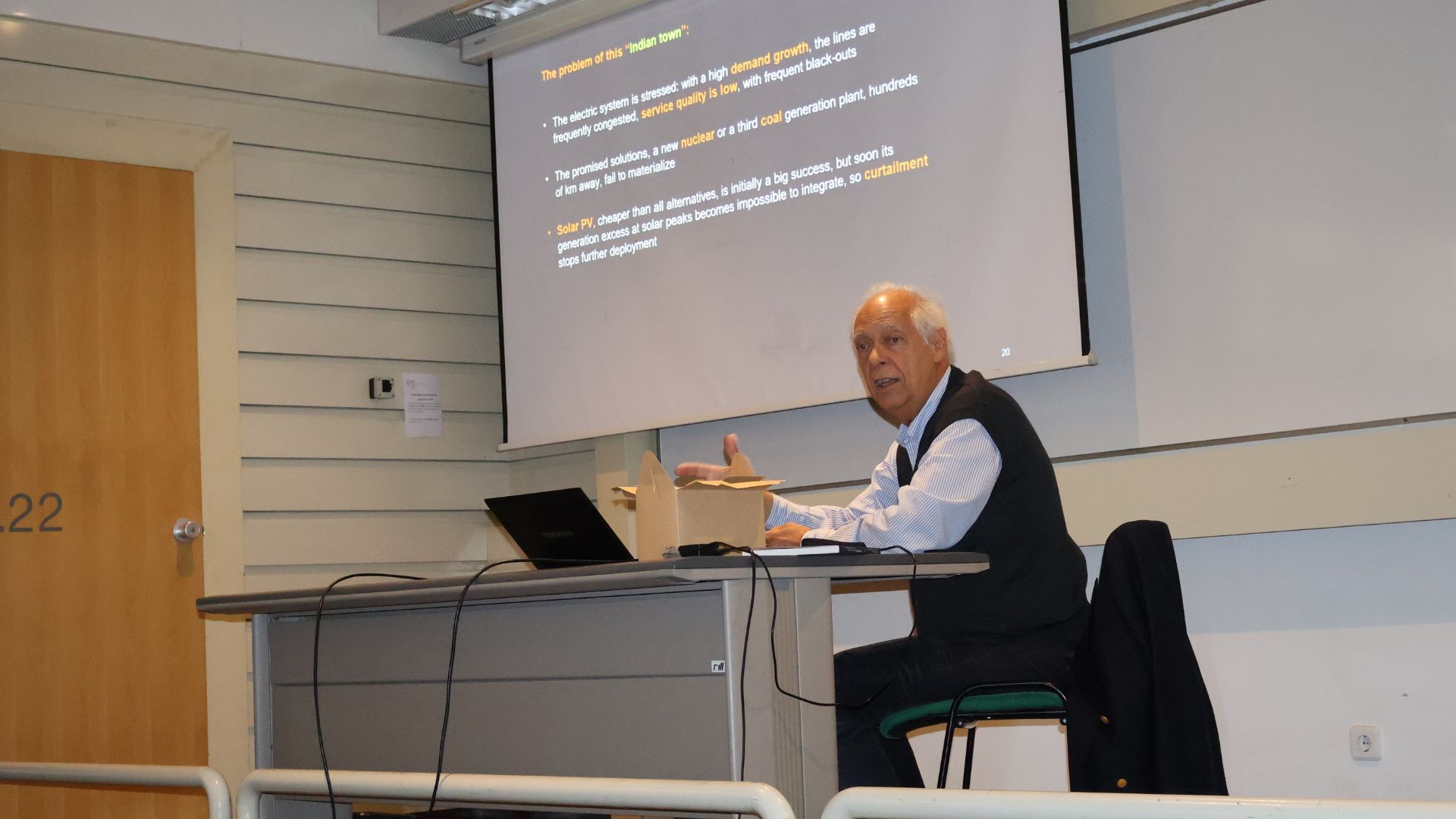Battery Swapping for Mobility

Last Wednesday, António M. Vallera, full professor at the Faculty of Sciences of the University of Lisbon (FCUL), shared his research at the DEEC TALK: “Battery Swapping for Mobility.” The lecture began with a brief introduction of the speaker by Pedro Carvalho, a DEEC faculty member and researcher at INESC-ID.
António Vallera started by highlighting that there are multiple pathways for the energy transition, emphasizing the need to seek solutions with long-term impact. In Portugal, there is a roadmap for decarbonization aimed at reducing greenhouse gas emissions by 2050, which requires changes across various sectors, particularly road transport, due to its high fossil fuel consumption. This raises two key questions: how to achieve decarbonization, and how to reduce the costs of the transition.

Although it is also possible to replace fossil fuels with synthetic fuels or hydrogen, the researcher explained that these alternatives have certain environmental and economic disadvantages. For example, biofuel production requires the exploitation of large agricultural areas. For these reasons, the most advantageous alternative is the adoption of electric vehicles.
If the future is electric, what technologies and choices are possible?
António M. Vallera, full professor at the Faculty of Sciences of the University of Lisbon (FCUL)
Another challenge lies in achieving a stable, balanced electrical system capable of meeting growing energy demand while integrating renewable sources. Currently, electricity generated from photovoltaic and wind sources is the cheapest in the Portuguese context. However, due to their dependence on weather conditions, these sources fluctuate and require corrections in the power grid.

In this context, António Vallera emphasized the importance of integrating land mobility into the electrical system, with outcomes depending on the adopted model. The speaker gave the example of road freight transport between Portugal and Mongolia: over a distance of approximately 10,000 kilometers in a straight line, around 10,000 tons of diesel are required, with multiple refueling stops along the route using fuel from various countries. However, along the journey, there are numerous locations suitable for photovoltaic energy production, as solar availability is common across regions. By replacing fossil fuel use with battery-powered vehicles, energy could be sourced locally from renewable production.
Another advantage of photovoltaic energy is solar peaks: “We have excess energy,” the speaker noted. “We reach the point where solar peaks exceed consumption—we will be able to export and sell that energy.” However, neighboring regions may also experience excess energy, making surplus sales more difficult. It is here that electric mobility becomes particularly relevant.

Currently, electric vehicles are charged via a plug-in system: the user connects the vehicle to the grid and charging begins immediately, or uses a flexibility service, delaying the process to low-demand hours. Plug-in charging does not include energy storage, relying entirely on the grid. It is also time-consuming, requiring hours of connection.
The battery swapping model, presented by António Vallera, involves exchanging vehicle batteries. It works like a service station, where a discharged battery is replaced with a charged one in under three minutes, allowing the driver to resume their journey quickly.
And what happens to the battery the robot just removed from my vehicle? (…) That battery stays there to be recharged.
António M. Vallera, full professor at the Faculty of Sciences of the University of Lisbon (FCUL)
Batteries remain at the station 24 hours a day, following the daily solar energy cycle, and are charged whenever grid energy is available, preferably using the cheapest energy (solar), making the charging process flexible. As the charging is slow, no complex cooling systems are needed, extending battery lifespan. Additionally, batteries are monitored to ensure quality both during vehicle use and later in a second-life application, including proper recycling. In the second life, the battery can be used for station energy storage in a bidirectional system, allowing surplus solar energy to be utilized.
With batteries, we start to have excess solar energy. We satisfy all consumption and mobility needs, store the surplus in the batteries, and inject it into the grid at night. Essentially, we are replacing grid energy with energy from second-life batteries.
António M. Vallera, full professor at the Faculty of Sciences of the University of Lisbon (FCUL)
In this way, vehicle energy supply is sourced locally, at low cost, from renewable energy, with positive geostrategic and economic implications. Second-life batteries also supply energy to the grid during periods without sunlight, helping balance the system and meet demand when photovoltaic production is unavailable.
António Vallera concluded his presentation with examples of companies adopting the battery swapping model.
The DEEC TALK ended with a Q&A session with the attending researchers.

